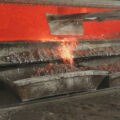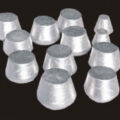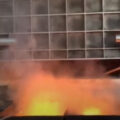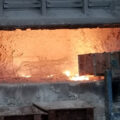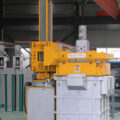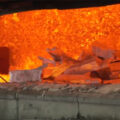Aluminum smelting process must be strictly controlled, so as to obtain high-quality aluminum alloy castings. With the development of science and technology, automotive, shipbuilding, aviation, aerospace and other manufacturing industries have increasingly higher quality requirements for aluminum alloy castings. In addition to ensuring chemical composition, mechanical properties and dimensional accuracy, castings are not allowed to have porosity and shrinkage. Defects such as holes. The smelting of aluminum alloy is a very important process in the production of castings. Years of production experience has proved that the smelting process is not strictly controlled, and the castings are prone to pinholes, oxidized slag inclusions, shrinkage and other defects that directly affect the quality of the castings.
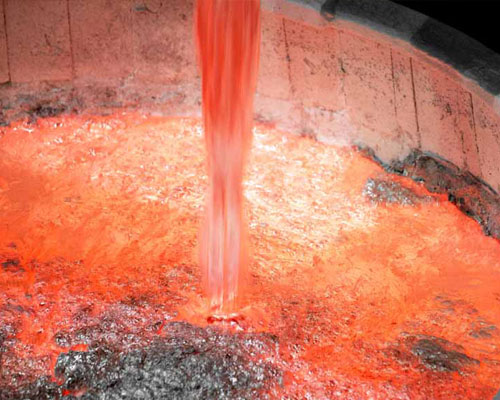
Preparation before Smelting
Strictly control the quality of the charge. The quality of the charge is the source of the casting production, which directly affects the quality of the final castings. Unqualified ingredients lead to mass scrapping of products. Therefore, we must attach great importance to it.
Strictly control the proportion of new and old charge in the charge, and the percentage of charge back to charge should be less than or equal to 70%.
Ensure that the charge is clean, and the charge must be used after sand blowing.
The third-class reflow material should be remelted and refined before use.
The charge should be fully preheated to remove impurities such as moisture and oil.
As the alloys include aluminum-silicon, aluminum-copper, aluminum-magnesium and other alloys, there are more elements used in alloy grades, and they affect each other, requiring strict management and non-mixing.
Ingredients and weighing must be accurate. Considering the loss in the process of degassing, slagging and deterioration, can the chemical composition of the casting be guaranteed.
The tools used in the smelting must be cleaned and painted to ensure effective isolation from the aluminum alloy during use, and to reduce the contamination of the alloy liquid by impurities. It needs to be fully preheated. The site must be baked to dark red and then added to the furnace for smelting to waterproof the steaming zone. Into the alloy, the gas of the alloy increases and the pinhole degree increases.
Prepare the covering agent, refining agent and modifier according to the established process specifications.
Aluminum Smelting Process
① Loading. Fill the preheated furnace with prefabricated alloy ingots, high-quality reheating materials, add alloy, and finally add alloying elements
②Temperature control. Strictly control the temperature of aluminum alloy smelting. Only at the right temperature can high-quality alloy liquid be obtained to avoid overheating. If the temperature is too high, it will increase the oxidation burning loss of various elements in the alloy and cause the change of the chemical composition in the alloy. If the temperature is too low, the chemical composition of the alloy will be uneven, and the oxidized inclusions and gas in the alloy will not be easily discharged, and the performance of the alloy will decrease, which will affect the casting performance.
③Time control. Strictly control the smelting time, operate quickly, reduce alloy gettering and oxidation inclusions, increase the burning loss of alloy elements, and affect the chemical composition of the alloy.
④ Refining operation. The main purpose of aluminum alloy refining is to remove gases and inclusions in the melt, and to uniform alloy composition. Refining is an extremely important process in the aluminum smelting process. The refining agent should be selected correctly, and the amount should be controlled to add 0.5%-0.7% of the alloy mass. Grasp the refining temperature, the refining temperature is generally controlled at 700-720 degrees. In the refining process, use a bell jar to press the refining agent into the melt surface about 2/3 in batches, and rotate it clockwise evenly and slowly. The speed should be slow and the action should be stable to avoid large movements of the molten metal to prevent increase in hydrogen. Content and involvement in inclusions.
⑤Deterioration treatment. The purpose of alloy modification is to refine the grains and improve the performance of castings.
The modifier should be preheated first, and the control points are:
- The deterioration temperature generally does not exceed 740 degrees.
- The deterioration time is generally 10 minutes.
- The amount of modifier added, the amount of two-color modifier used is generally 1.0%-1.2% of the mass of the alloy liquid.
- The method of operation must be in place. After alloy refining, pouring should be completed as soon as possible. Sand casting should generally be controlled within 40 minutes, and metal casting should be controlled within 2 hours. Otherwise, re-refining and metamorphism should be carried out. The refining agent added during re-refining is about 0.2% of the alloy mass.
(Note: In order to prevent the occurrence of aluminum alloy splashing, the melting site should be kept dry; operators should wear radiation-proof glasses, work caps, gloves, and work clothes.)


